USMNT’s World Cup Roster Revealed: Berhalter Springs Late Surprises for Final Squad
The U.S. World Cup roster is out, and the list of 26 men who will carry the Stars and Stripes in Qatar is a reminder that while the tournament is a culmination of four years of tactical and individual development—and of the careful establishment of on-field and locker room chemistry and culture—it’s also an event that happens at a single moment in time.
As much as U.S. coach Gregg Berhalter has stressed the former while guiding an historically young roster back to the World Cup after an eight-year absence, several of the names announced Wednesday reveal his acknowledgement that temporary form, or just sheer talent, matters too.
The biggest shock is the exclusion of goalkeeper Zack Steffen, whose status had slipped somewhat over the past year but who still seemed like a lock to be one of the three World Cup netminders. Arsenal’s Matt Turner now appears to be the likely U.S. starter in Qatar. Other noteworthy exclusions are striker Ricardo Pepi, who was a World Cup qualifying hero last fall; fellow forward Jordan Pefok, a regular scorer at the club level; and veteran winger Paul Arriola, who’s been a Berhalter favorite.
Meanwhile, center back Tim Ream and forward Haji Wright are somewhat surprising inclusions. Their presence, along with the aforementioned cuts, is an indication that Berhalter was willing to change his mind at the finish line despite a consistent focus on long-term cohesion and the time he believes it requires to master his system.
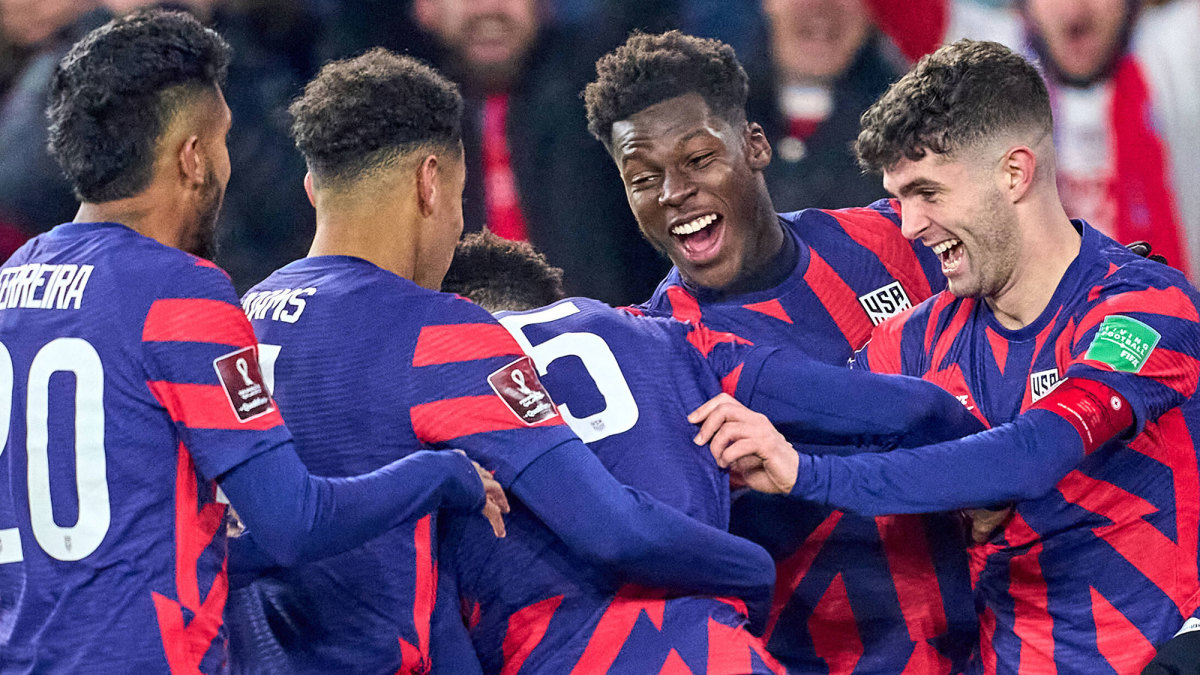
The U.S. was the youngest team in the world during significant stretches of qualifying, and the team unveiled Wednesday will be the second-youngest in the program’s World Cup history when it opens the tournament against Wales on Nov. 21. This American squad will average 25.48 years of age. The 1990 team, which drew heavily on players with recent college experience because of the absence of a top-tier professional league, averaged 24.07.
Ream, at 35, is the outlier. There are three teenagers on the team: defender Joe Scally, midfielder Yunus Musah and forward Gio Reyna. But the latter two will turn 20 this month. There are nine U-23 players, tying the record set in 1990.
The Americans will continue their World Cup against England on Nov. 25, then conclude the group stage on Nov. 29 against Iran. The top two finishers in the four-team group will move on to the round of 16.
Among the 26 invitees, 21 participated in the 14-game qualifying campaign that concluded at the end of March, accounting for 70% of the total minutes played and 16 of the 21 goals scored. The five who weren’t among the 38 qualifying contributors are goalkeepers Ethan Horvath and Sean Johnson, defenders Cameron Carter-Vickers and Scally, and Wright.
The World Cup roster also reflects the continued spread of American players to Europe. Fourteen, more than half, play in one of Europe’s “Big Five” leagues.
Here’s a look at the World Cup team.
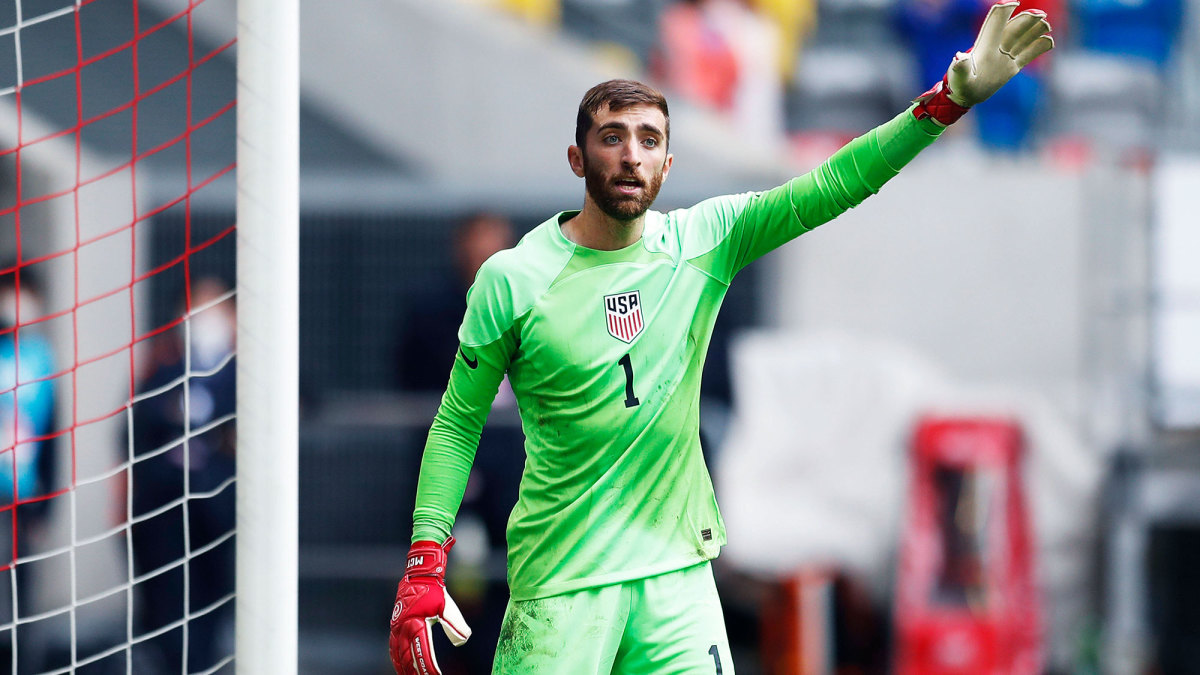
GOALKEEPERS
Ethan Horvath (Luton Town), Sean Johnson (New York City FC), Matt Turner (Arsenal)
Steffen is the most unexpected World Cup omission. It’s not Landon Donovan–in-2014 level astonishing, but few would’ve seen this coming.
The 27-year-old was Berhalter’s clear No. 1 in the spring of 2021, even though he played just a dozen times that season for Manchester City. The U.S. coach lauded the guidance, competition and environment Steffen enjoyed at the Premier League power, and the two had history together with the Columbus Crew.
But the ground under Steffen’s feet started to give way, albeit gradually, that summer. Horvath demonstrated his potential with late heroics in the Concacaf Nations League, and then Turner was outstanding at the ensuing Gold Cup, yielding just one goal in six games. Turner then started the first five World Cup qualifiers as Steffen navigated injury and the coronavirus.
While the late-blooming Turner proved capable, Berhalter still seemed to prefer Steffen when both keepers were available. Steffen was better with his feet, Berhalter suggested, which the manager felt was vital to the U.S. system. Turner even acknowledged that relative shortcoming. But Steffen missed the cold-weather qualifiers in January and February with a back injury before returning to the lineup for the Octagonal’s March conclusion (which Turner missed with a foot issue), where he was beaten twice in Costa Rica.
Despite Berhalter’s persistent faith, Steffen never really grabbed ahold of the No. 1 shirt. His overall performance in qualifying was unconvincing, and just about everyone outside the team seemed convinced that Turner was the better shot stopper. During the Octagonal, Steffen ranked 12th out of 13 keepers in goals prevented (expected goals conceded - actual goals conceded). While Steffen was in the red, Turner placed sixth and was in the black, according to TruMedia. Following the four-game June camp, which Steffen missed, Turner’s save percentage across his 18 U.S. appearances was 89%, according to ESPN. Steffen’s was 72% in 29 career caps.
Turner’s summer move to North London would rob the 28-year-old of consistent minutes—he’s played four times for the Gunners and was nursing a groin injury heading into Wednesday’s EFL Cup game. But he was among the very few bright spots during a frustrating September international window, when the U.S. was hammered by Japan and forced into a drab 0–0 tie by Saudi Arabia. At that point, Turner starting in Qatar seemed more realistic. But that didn’t suggest Steffen might be axed altogether. His loan to Middlesbrough, where he’s been a consistent starter since returning from a September knee injury, wasn’t enough.
Horvath, who’s played regularly while on loan to Luton Town, has eight caps and started the muddy, rain-soaked Concacaf Nations League draw at El Salvador in June. Johnson has played just once for Berhalter in the past 2.5 years—the June friendly against Uruguay. But the 2021 MLS Cup MVP is well liked inside the team and is considered a leader, and so makes sense as a third World Cup goalkeeper.
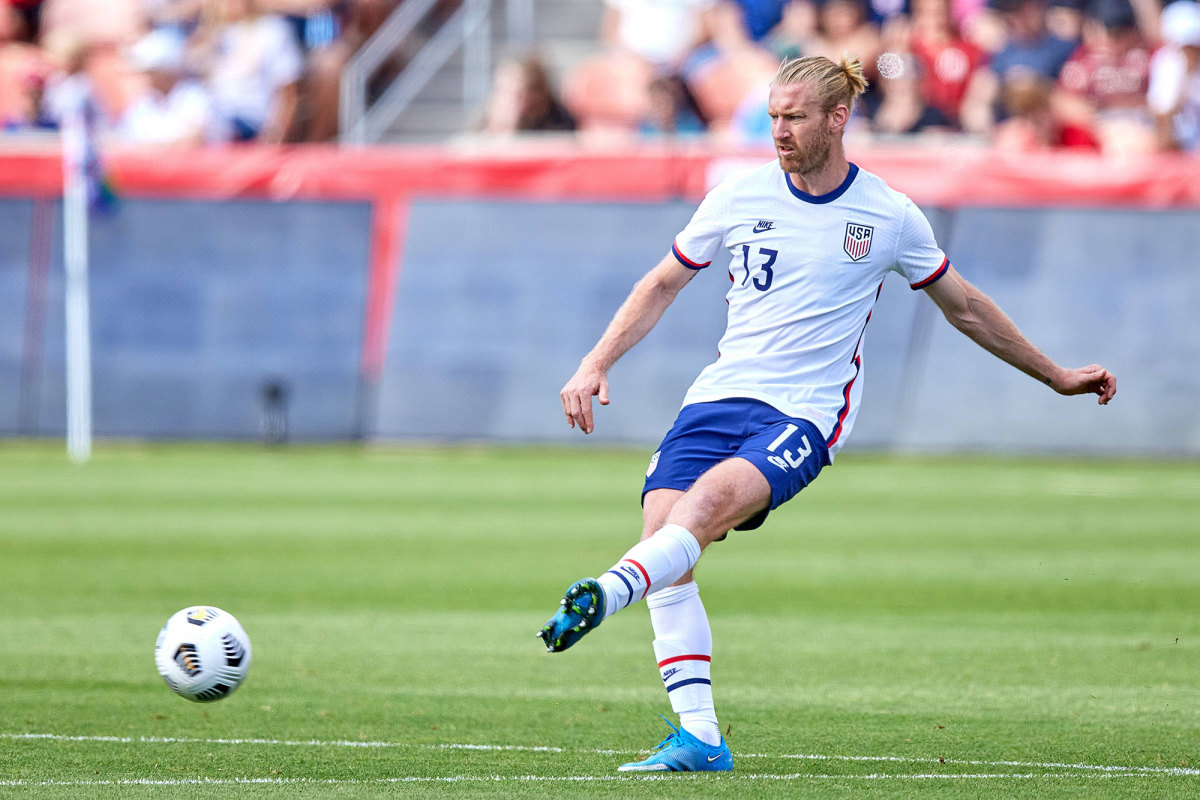
DEFENDERS
Cameron Carter-Vickers (Celtic), Sergiño Dest (AC Milan), Aaron Long (New York Red Bulls), Shaq Moore (Nashville SC), Tim Ream (Fulham), Antonee Robinson (Fulham), Joe Scally (Borussia Mönchengladbach), DeAndre Yedlin (Inter Miami), Walker Zimmerman (Nashville SC)
Center back has been one of the two consistent trouble spots for this U.S. team, and the two American options who may possess the greatest potential, Miles Robinson and Chris Richards, won’t be going to Qatar. Robinson, who should’ve been named Gold Cup MVP and who started five of the first six qualifiers, tore his Achilles in May. Richards, who’s been at Bayern Munich, TSG Hoffenheim and Crystal Palace over the past year-plus, simply hasn’t been able to stay healthy. He acknowledged this week that his lingering hamstring injury would bar him from the World Cup.
Berhalter got a bit lucky when Zimmerman, who wasn’t initially near the top of the U.S. depth chart and was left on the bench early in qualifying, emerged quickly as a starter. He’s decent on the ball, powerful in the air and, at 29, a relatively grizzled veteran inside the locker room. Berhalter’s tinkering and decisions beyond Zimmerman, however, have frustrated or confused fans and observers.
The manager gave up on John Brooks, a 2014 World Cup alum, following the opening qualifying window in September ’21. Berhalter insisted that the door wasn’t shut, but Brooks never never got a second U.S. chance and has barely played since moving to Benfica over the summer. Ream, another veteran, also was cast aside following that same window. Berhalter later hinted that the Fulham icon lacked the recovery speed required to play as part of the high line the U.S. planned to deploy in Qatar.
But high lines don’t work against every opponent, and it’s always been difficult to imagine the Americans playing that way against England, one of the top teams in the world and the clear Group B favorite. Ream, meanwhile, has been captaining the Cottagers in the Premier League and going up against England’s high-profile attackers every weekend. Berhalter seemed to resist this reality following Miles Robinson’s injury, giving Long a look toward the end of qualifying and then featuring him in the subsequent Nations League and friendly matches. Long’s performances were middling at best, however, and he struggled at times with the ball under pressure. So Long, who was a U.S. regular before his 2021 Achilles injury, represents continuity. Ream’s somewhat surprising return is an indication Berhalter recognizes that talent and experience must occasionally trump trajectory.
Zimmerman and Ream have never started together. Carter-Vickers, a regular at Celtic, beat out the likes of Mark McKenzie, Erik Palmer-Brown and Matt Miazga for the fourth center back spot.
Antonee Robinson (left) and Dest (right) are near locks to start on the flanks, although Dest has been dealing with a recent muscle injury. Yedlin, the squad’s only World Cup veteran, offers experienced depth on the right, and Moore is in despite making only four U.S. appearances since the start of qualifying. Boavista’s Reggie Cannon is the odd man out among the glut of right backs. Scally can play on the left if need be, as can Dest if Robinson is unavailable. Another potential left back, Sam Vines of Royal Antwerp, was ruled out contention with a broken leg suffered last week. Defender/midfielder James Sands also didn't make the cut.
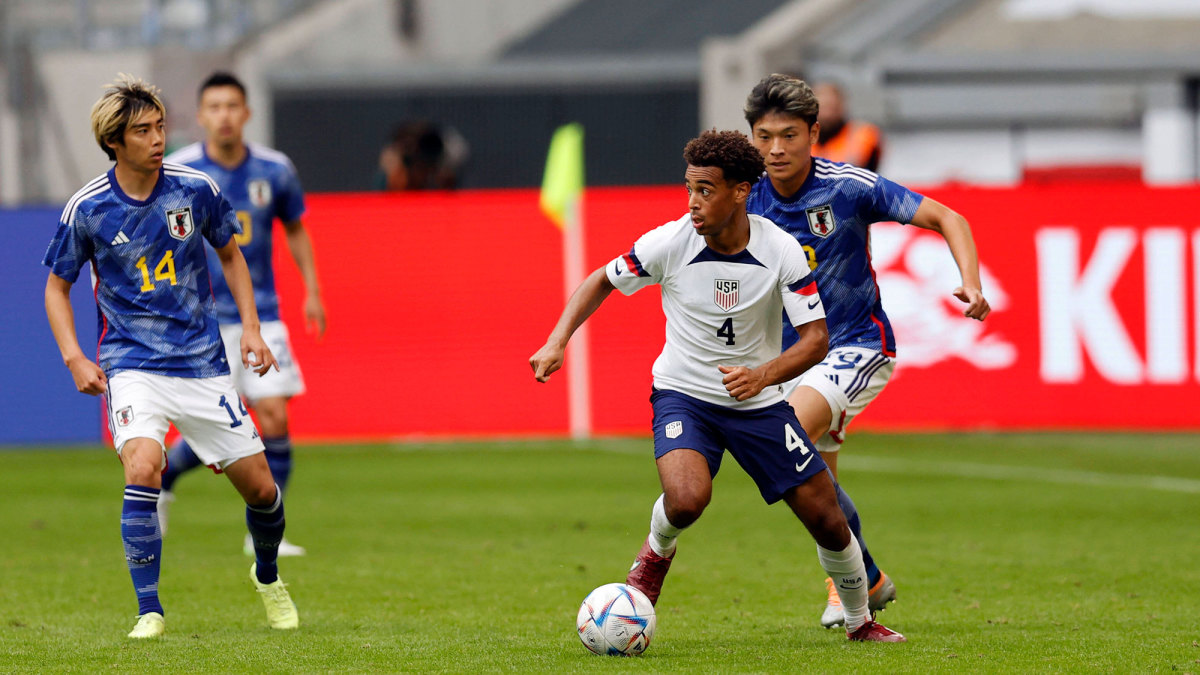
MIDFIELDERS
Brenden Aaronson (Leeds United), Kellyn Acosta (Los Angeles FC), Tyler Adams (Leeds United), Luca de la Torre (Celta Vigo), Weston McKennie (Juventus), Yunus Musah (Valencia), Cristian Roldan (Seattle Sounders)
The marching orders have been clear in the middle of Berhalter’s 4-3-3 for a while—the relentless Adams is the destroyer, the dynamic Musah is the progressor and the effervescent McKennie is the attacking spark plug and/or wrecking ball. Berhalter has tweaked the setup a couple times recently, pulling Musah further back and closer to Adams, but the MMA midfield has been pretty much to set in stone for a while. Acosta is the obvious choice as defensive depth and, when called upon, quality set-piece delivery.
De la Torre was on the periphery of the player pool for a while but impressed when finally given his chance toward the end of qualifying. The 24-year-old is technically gifted and good in combination or in tight spaces, and has overcome a recent injury to make Berhalter’s team.
The possibility of an appearance by forwards Aaronson or Gio Reyna in an advanced central midfield role remains, and Aaronson was listed as a midfielder Wednesday despite typically playing on the wing. He started in midfield in the June friendly against Morocco and the subsequent Nations League match in El Salvador. It makes Aaronson less of a factor in the high press, which is one of his strengths, but brings his energy and quality on the ball into the build-up. Berhalter will once again have to weigh experience and continuity against potential.
Roldan is a somewhat surprising choice. His star seemed to fade a bit this year amid questions that he didn’t really fit Berhalter’s system. But like Johnson, he’s a hard worker and well-liked veteran who the manager obviously feels is an asset. He’s in over Johnny Cardoso, Gianluca Busio and Malik Tillman, among others.
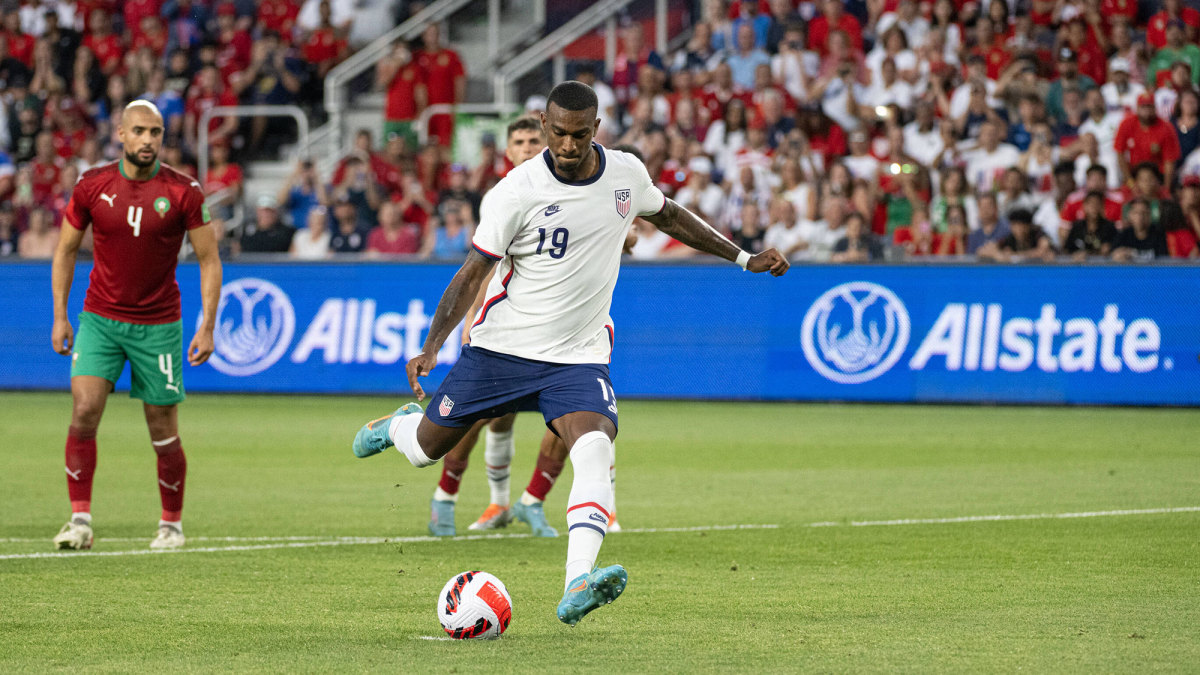
FORWARDS
Jesús Ferreira (FC Dallas), Jordan Morris (Seattle Sounders), Christian Pulisic (Chelsea), Gio Reyna (Borussia Dortmund), Josh Sargent (Norwich City), Tim Weah (Lille), Haji Wright (Antalyaspor)
Winger is the national team’s strongest position, and it’s quite remarkable that the U.S. now has players with the quality of Pulisic, Weah, Reyna, Aaronson or Morris who won’t find room in the starting XI. Berhalter will have to find a way to give each the opportunity to contribute in Qatar. Arriola, who’s has some good moments with the national team, came up short.
The Americans’ problem has been up top—this is the program’s second trouble spot. Berhalter makes heavy demands of his No. 9. They have to be comfortable linking and facilitating. They’re a vital component of Berhalter’s pressing regimen and, of course, they have to be efficient and effective as a finisher. That’s a big ask, and reasonable people can debate whether it’s the strikers who’ve failed to consistently meet those expectations, or the system that asks too much of the available player pool.
Berhalter’s decision not to give FC Cincinnati marksman Brandon Vazquez a look in September was telling. Despite the dual-national’s outstanding MLS season, the manager felt it was too late to introduce a brand-new player to a group and complex game model he’d spent so much time building from scratch.
There had already been sufficient rotation. Pepi, the big name missing from Wednesday’s list, was the golden boy last fall. But he hit the skids after moving to Augsburg and only recently recaptured some form and confidence on loan at Groningen. After tallying six goals in nine appearances in the Netherlands, it appeared like the FC Dallas product was back in contention.
Sargent was on a similar trajectory, falling down the U.S. depth chart because of his struggles with Norwich, then surging back up as those fortunes reversed. He still could be the best all-around striker in the pool and already has eight goals in 19 games for the Canaries this season.
Ferreira emerged as Berhalter’s frequent first choice following Pepi’s decline, but his ability to help orchestrate the attack and combine with teammates outstripped his knack for scoring on international duty. Meanwhile, Pefok often was the most consistent finisher at club level but because of injuries and Berhalter’s own preferences, he’s had only 30 minutes in a U.S. jersey over the past year.
Wright is the surprise up front. He wasn’t part of the U.S. during qualifying and didn’t have any of the systemic experience Berhalter has prioritized (although he’s tight with a good chunk of the team thanks to their time in the U.S. youth program). He scored a penalty on his senior debut against Morocco in June, but didn’t show much during the remainder of the month and wasn’t called up in September.
But he’s been on fire on Turkey, scoring nine times in 12 games. He’s in form, and sometimes that’s enough.
More Soccer Coverage:
